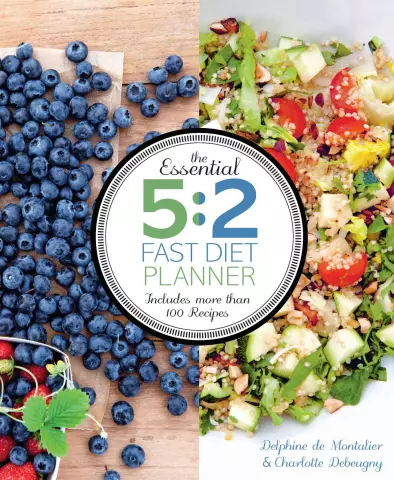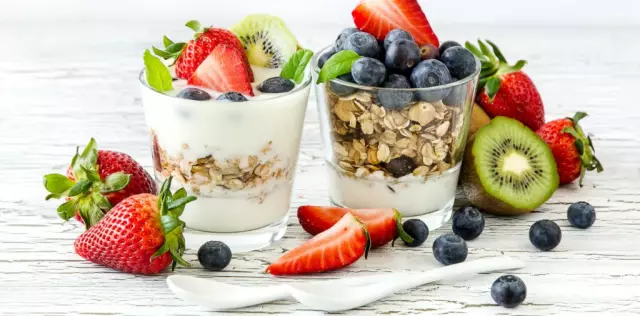- Author Rachel Wainwright [email protected].
- Public 2023-12-15 07:39.
- Last modified 2025-11-02 20:14.
Anti-cholesterol diet
While about 80% of Americans and Europeans know their own blood cholesterol levels, no more than 5% of our compatriots have measured this indicator at least once in their lives. According to cardiologists, it is the cholesterol risk factor for heart attacks and strokes that plays one of the key roles in the high mortality rate from these diseases. Compliance with an anti-cholesterol diet contributes to the preservation of the health, and sometimes the life of a considerable number of patients.
Principles of the Cholesterol Diet

The human body needs cholesterol. Many hormones, including sex hormones, use it as one of the main building materials. About half of the cholesterol we need is of endogenous origin and is synthesized in the process of life. We must get the other half from food.
A radical anti-cholesterol diet, that is, a complete exclusion from the diet of any foods containing cholesterol, is harmful and dangerous. For example, women who adhere to such a nutritional system for a long time begin to experience a libido deficiency, absence of a menstrual cycle, early onset of menopause, and so on.
Eating a moderate cholesterol diet requires some balance. With low motor activity and, as a consequence, low blood flow intensity, an excess of food with a high content of cholesterol in the diet can lead to the deposition of this substance on the walls of blood vessels, the proliferation of connective tissue and the formation of atherosclerotic plaques.
The lumen of the vessel narrows, and its elasticity decreases. The vascular wall becomes dense, and the vessels themselves become extremely fragile. It should be noted that this process proceeds rather slowly, therefore, starting from childhood, you should not consume foods in excess - sources of cholesterol. Upon reaching the age of forty, a weighted anti-cholesterol diet, designed to normalize metabolism in the body, should become the usual dietary norm for an ordinary city dweller.
You need to know that cholesterol is inherently heterogeneous. It is customary to distinguish between several of its fractions, namely, high and low density lipoproteins. Low-density lipoproteins - the so-called "bad" cholesterol - form vascular plaques, while high-density lipoproteins - "good" cholesterol - remove "bad" cholesterol from the cells of the human body.
In the absence of any complaints, cholesterol levels should be monitored once every five years, starting at the age of twenty. If abnormalities are detected, the doctor will not immediately prescribe medication. In the overwhelming majority of cases, they try to normalize the level of cholesterol in the blood by prescribing an anti-cholesterol diet.
Anti-cholesterol diet menu. Recipes
There are certain general principles for organizing food within the anti-cholesterol diet menu. For example, chicken should be cooked without skin, since it is too late to remove the skin after cooking - cholesterol has already passed into poultry meat.
Alcohol consumption also has a significant effect on blood cholesterol levels. In terms of pure alcohol, 20 g of alcohol per day helps to reduce the level of low density lipoproteins, while 100 g leads to an increase in this indicator.
Foods such as garlic, apples, grapefruit, cauliflower, and legumes remove the “bad” cholesterol from the body. Also, eicosapentaenoic acid, which is contained in a sufficient amount in sea fish, has a pronounced anticholesterol effect. Surprisingly, arachidonic acid found in lard also has an anti-cholesterol effect (of course, the dose of this product is minimal).
To normalize cholesterol levels, an anti-cholesterol diet minimizes the consumption of animal fats - lamb, pork, beef, and butter, replacing them with valuable vegetable oils, without fail, unrefined oils - olive, linseed and others.
The polyunsaturated fatty acids contained in them contribute to the breakdown of cholesterol to bile acids, which, in turn, are excreted together with bile due to the choleretic effect of the same oils. They also increase intestinal peristalsis, thereby removing excess cholesterol from feces.
Under the influence of fatty acids of vegetable oils, cholesterol forms soluble forms, due to which the elasticity of blood vessels increases. They also promote the synthesis of choline and an increase in its lipotropic effect, resulting in a decrease in blood viscosity.
As part of an anti-cholesterol diet, the consumption of rapidly digestible carbohydrates - sugar, meals made from premium flour, etc., is minimized, since in the process of digestion they are easily converted into cholesterol. They are replaced with complex carbohydrates - cereals, bran flour products. Also include in the diet a large amount of fruits and vegetables rich in indigestible coarse fibers and pectins.
In the menu of the anti-cholesterol diet, protein should be fully present, at least 60% of which should be rich in essential amino acids (in particular methionine and choline), complete animal protein. A considerable amount of choline is found in legumes, oatmeal, cottage cheese, herring, spinach, and methionine - in pike perch, cod, buckwheat.

As part of an anti-cholesterol diet, the liver, kidneys, egg yolk, fatty fish and caviar, broths, pickles and marinades should be excluded from the diet, and the intake of calcium salts should be minimized. Otherwise, the inclusion of vitamin and mineral complexes is encouraged. It is also recommended to include in the diet mushrooms, low-fat dairy products, egg white and seafood with the exception of shellfish.
A sample anti-cholesterol diet menu might look like this:
- 1st breakfast - steam omelet with minced meat, porridge, tea with skim milk;
- 2nd breakfast - vegetable salad;
- lunch - soup with cereals and vegetables in vegetable oil, baked chicken breast with vegetable garnish, whole grain bread;
- afternoon tea - apple, rosehip broth;
- dinner - baked fish, rice with vegetables, tea with skim milk;
- before going to bed - low-fat kefir.
Using the above scheme and your own imagination, it is not difficult to prepare a huge number of dishes made according to recipes for an anti-cholesterol diet.
Found a mistake in the text? Select it and press Ctrl + Enter.






